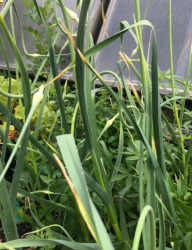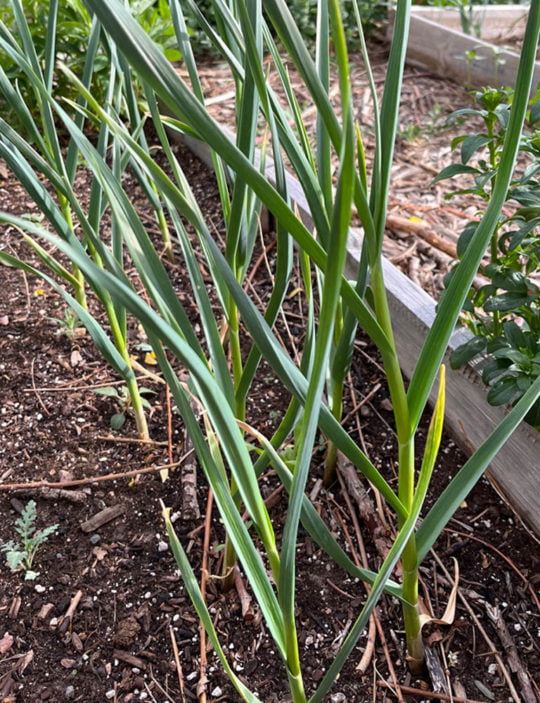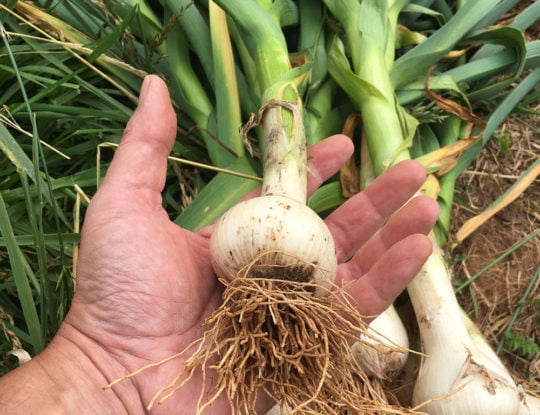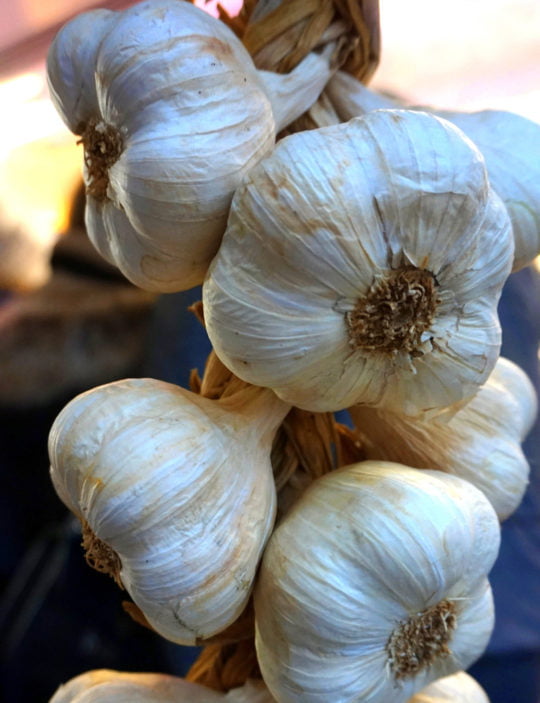By Shannon Moreau

Garlic, you know it, you love it—unless you’re a vampire. It is a wonderful companion plant, dependable, and is a staple for gardeners wanting to grow storage foods. With these tips you can find the right variety to suit your needs and most importantly how to actually make your harvest last later down the road!
Who’s who?
There are two types of garlic, hardneck and softneck. The “neck” is the stalk that comes out of the garlic bulb just above the soil line. Hardneck garlic is more cold hardy and requires exposure to cold temperatures to form their bulbs making it a great option for Colorado gardeners. Hardneck is ideal for fall planting and has a fairly good storage life. Many hardneck varieties have more interesting and complex flavors and produce garlic scapes (the tender and delicious stem and flower bud), so they are great for literally spicing it up in your recipes. They tend to produce smaller numbers of large cloves than softneck garlic.
Softneck is less cold hardy and does best in climates with more mild winters so many varieties can be planted in the early spring. They will mature faster and tend to have many smaller cloves with thin skin. Softneck garlic is typically what you would find in the grocery store so the flavor will be familiar, however, garlic purchased at the grocery store may be treated with an anti-sprouting agent so it is not the best for planting.
Harvesting garlic scapes

While many focus on mainly the garlic bulb, there is another delicious part to the plant garlic scape. The twisting stem of the garlic scape emerges from the top set of leaves, ready to harvest throughout June.
Not to be overlooked, garlic scapes are only produced on hardneck garlic and their tender stems and buds are an easy way to add flavor to many recipes. To harvest these tasty curly stalks, cut them just about the top set of leaves. They do not store for long so use them quickly after harvesting!
Harvesting the bulb
The first sign to look for when prepping to harvest your garlic is the tips of the leaves turning brown which typically occurs in July-August for fall planted bulbs. Once you see both the stem and the leaves begin to brown it’s time to get them out of the ground. When it comes time to harvest, lift the bulbs out of the soil, do not pull them. If the soil in your beds is loose and easy to work with, you can carefully dig around the base of the plant and lift them by hand, otherwise use a small cultivating tool. Once they are lifted remove all dirt and cut the roots short then, either hang or spread out the bulbs in a cool, well ventilated area away from direct sun. Do not cover the bulbs with anything that could trap moisture and prevent proper airflow. The curing process takes about two weeks.
After the bulbs are done curing, trim the brown stems back to the top of the bulb and keep track of which varieties have finished curing to record how long each will store for. Keep cured garlic in a cool place or at room temperature either on the counter or in a garlic jar. Do not keep it in an airtight container or it can rot! If you want a more decorative way of storing your softneck garlic, braiding them is a beautiful way to put up your harvest. Hardneck garlic, true to its name, is too stiff to braid. Be sure to brush up on your french braiding or take a look at an online tutorial.
Originally published on June 2nd, 2022.



